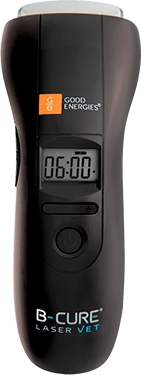Five Benefits of Laser Therapy That Can Make Your Dog Happy
Laser therapy has become an increasingly popular treatment option for dogs in recent years, and for a good reason.
This non-invasive and low-risk treatment uses a cold laser therapy machine for dogs to deliver laser energy to the affected area, promoting tissue repair and healing. In this article, we provided five benefits of laser therapy for dogs.

Five Benefits of Laser Therapy for Dogs
Here are five benefits of laser therapy for dogs.
Pain Relief
Laser therapy has emerged as a promising treatment option for reducing pain in dogs and promoting healing. This treatment involves using low-level lasers to stimulate cells and improve blood flow, leading to a range of therapeutic benefits.
Moreover, laser therapy can also be helpful in the post-surgery recovery process, helping dogs recover more quickly and comfortably after an operation.
Improved Mobility
Arthritis is a common condition in dogs that can cause joint pain, stiffness, and difficulty moving. It can significantly impact a dog’s quality of life, making it difficult to enjoy their favorite activities. Laser therapy can help to alleviate these symptoms, allowing dogs to move more freely and comfortably.
The laser energy delivered during treatment helps to stimulate the production of collagen, a protein essential for maintaining healthy joint tissue. It also helps to reduce inflammation, which can contribute to joint pain and stiffness.
By improving joint health and reducing inflammation, laser therapy can help dogs to move more comfortably.
Speeds up Healing
This can be especially beneficial for dogs that may be more prone to infection or have compromised immune systems, as it allows them to heal more quickly, without the risk of complications.
It’s Non-Invasive and Low Risk
Unlike other treatment options that may involve medication or surgery, laser therapy uses low-level lasers to stimulate cells and improve blood flow, providing therapeutic benefits without requiring for invasive procedures.
This makes it a safe and gentle option for dogs of all ages, including those that may be more sensitive or prone to side effects from medications.
Laser therapy is relatively painless and does not require any recovery time, allowing dogs to resume their normal activities immediately after treatment.
Treats Strains
Laser therapy is a highly effective treatment option for muscle, tendon, and ligament strains. It works by delivering laser energy to the affected area, which helps to relieve muscle contracture and reduce inflammation.
This can provide significant pain relief and speed up recovery, making it a beneficial treatment for sudden injuries. Most cases of muscle, tendon, and ligament strains will require only a few sessions of laser treatment to achieve optimal results.
How Does Laser Therapy Work?
Laser therapy is typically administered using a handheld device that delivers laser energy to the affected area. You can also buy devices that you can use to administer laser therapy for dogs at home. The treatment is generally painless and well-tolerated by dogs.
During the treatment, dogs may feel a mild warming sensation at the site of the laser application. Some dogs may find the treatment relaxing and fall asleep during the session.
Laser therapy sessions are typically short, with the total treatment time ranging from 5 to 15 minutes. The number of sessions needed will depend on the condition and response to treatment.
Tips for Caring for a Dog Receiving Laser Therapy
Here are a few caring tips for a dog receiving laser therapy.
Follow Your Veterinarian’s Instructions
Following your veterinarian’s instructions for caring for your dog during the laser therapy treatment process is important. This may include giving medications as prescribed and providing rest and support as needed.
Encourage Mobility
Encouraging your dog to move around and engage in gentle activity can help to promote healing and improve mobility. Follow your veterinarian’s recommendations for appropriate activity levels during the recovery process.
Provide Support
Depending on the condition being treated, your dog may benefit from additional support, such as a crate rest or using a harness or sling.
Avoid Direct Sunlight
After laser therapy treatments, it is essential to avoid exposing the treated area to direct sunlight for at least 48 hours. This can help to prevent skin irritation and sunburn.
Potential Side Effects and Precautions
Here are a few side effects that may occur.
Side Effects
Laser therapy is generally well-tolerated by dogs, and there are few side effects associated with the treatment. Some dogs may experience mild skin irritation at the site of the laser application, but this is typically temporary and resolves on its own.
Precautions
Certain medical conditions may make laser therapy inappropriate for certain dogs. Discuss your dog’s medical history with your veterinarian to determine if laser therapy is a suitable treatment option.
Final Thoughts
Laser therapy can be a valuable tool for managing a range of conditions in dogs and improving their quality of life. If you’re considering a laser therapy machine for dogs, discuss the option with your veterinarian to determine if it is a suitable treatment.




